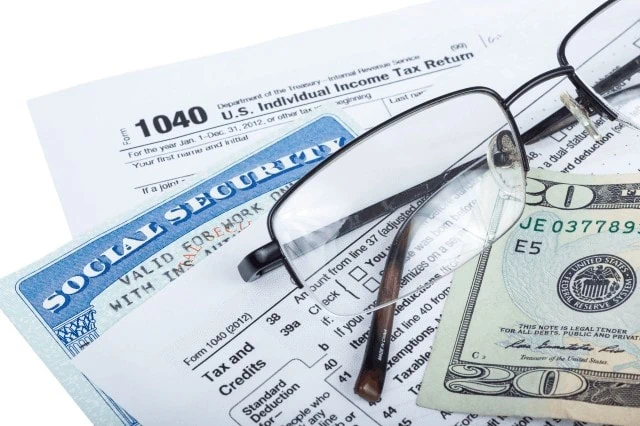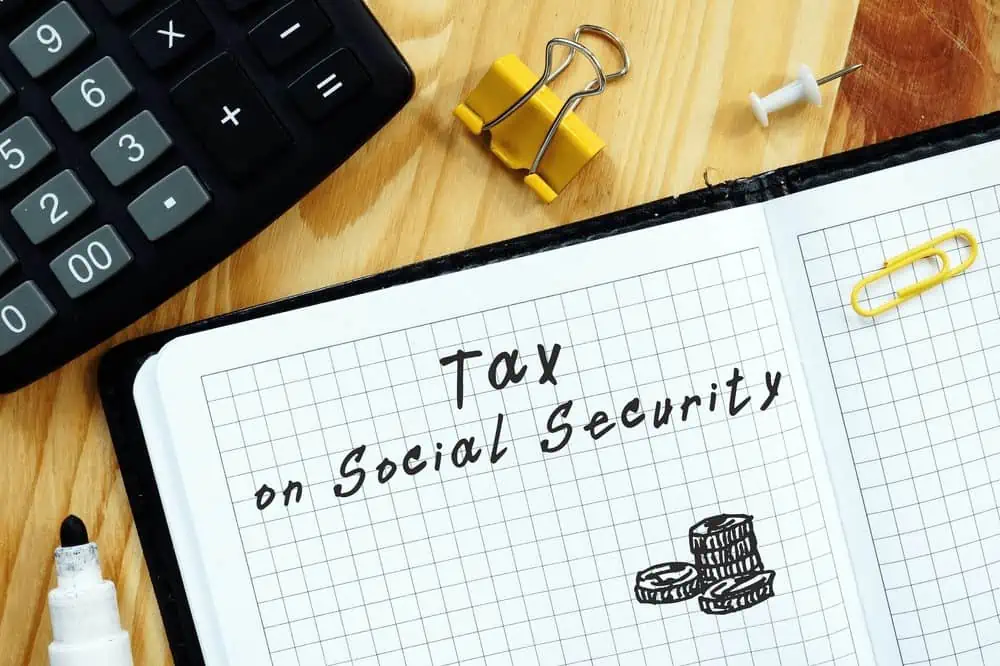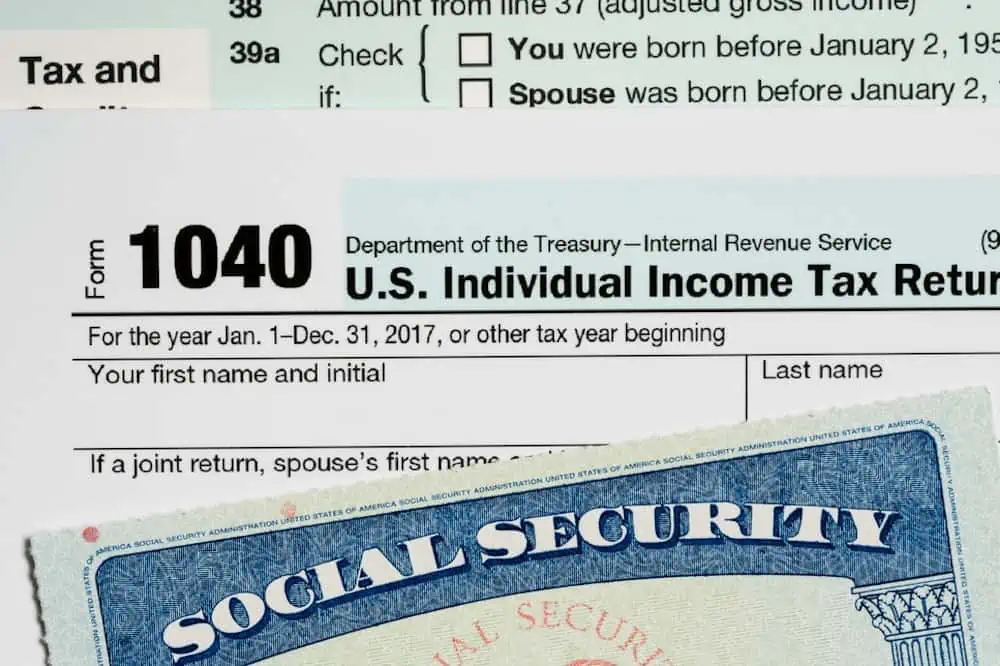Social Security is designed to provide some financial stability to certain groups of Americans. But while it’s virtually guaranteed to those groups, it can, in certain circumstances, be taken away.
Social Security is best known for supplementing the income of retirees, but its reach extends well beyond that. Specifically, the three different programs under the Social Security banner a person may be eligible to collect are:
— Old-Age/Retirement Social Security (OA)
— Survivors Social Security (S)
— Social Security Disability Insurance (DI)
(The acronyms from each program combine to form OASDI, a potentially familiar acronym seen on your payment stubs if you were ever employed as a W-2 employee.)
But given its financial importance, many people wonder, “Can Social Security be taken away?” And the answer is: It can. Just because you’ve started receiving Social Security doesn’t necessarily mean it’ll last the rest of your life. In some situations, your benefit amount may be reduced or even end completely.
Why would Social Security benefits be suspended? Sometimes, the benefit ending is inevitable (and could even work in your favor). In other cases, how much you receive or how long you receive a benefit is under your control, so you don’t want to make any mistakes.
Today, I’m going to delve into the various ways you could lose part or all of each type of Social Security, whether you’re receiving it now or expect to receive the benefit in the future.
Table of Contents
How to Lose Old-Age/Retirement Social Security

I’ll start with Old Age/Retirement Social Security.
Social Security retirement benefits come in the form of a monthly check. This money can replace part of a person’s income when they stop working or reduce working hours.
Your full retirement age, also known as normal retirement age, is when a person becomes eligible for unreduced Social Security retirement benefits. Everybody doesn’t have the same full retirement age—it’s based on the year you were born. The current brackets for one’s normal retirement age are as follows:
— Born between 1943 to 1954: 66
— Born in 1955: 66 and 2 months
— Born in 1956: 66 and 4 months
— Born in 1957: 66 and 6 months
— Born in 1958: 66 and 8 months
— Born in 1959: 66 and 10 months
— Born 1960 or later: 67
But as you’re about to learn, you don’t need to wait until these ages to start receiving Social Security … and in fact, that’s the first way you can end up drawing a reduced benefit.
1. Taking Retirement Too Early

While you might hit full retirement age somewhere between 66 and 67, you can begin receiving Social Security benefits up to five years earlier.
But of course, there’s a catch.
If you take Social Security before your full retirement age, you’ll receive a reduced amount. Specifically, your benefits will be reduced by 5/9ths of 1% for each month before normal retirement age, up to 36 months. If you retire even earlier than 36 months before full retirement age, your benefit will be reduced by an additional 5/12ths of 1% per month, up to the maximum early retirement amount of 60 months. Per the IRS:
“For example, if the number of reduction months is 60 (the maximum number for retirement at 62 when normal retirement age is 67), then the benefit is reduced by 30 percent. This maximum reduction is calculated as 36 months times 5/9 of 1 percent plus 24 months times 5/12 of 1 percent.”
The upshot is, if you wait to retire sometime after full retirement age, you actually receive delayed retirement credits, calculated at different rates depending on when you were born, though the additional benefits stop at age 70. For those born in 1943 or later, your monthly rate of increase is 2/3rds of 1%, good for an 8% rate of increase across a full 12 months. (But you still must be insured under Social Security at your full retirement age.)
This isn’t a test of whether you can delay gratification. While you might receive reduced benefits prior to normal retirement age, depending on your situation, it might actually make sense to receive lesser benefits for longer.
Related: How Are Social Security Benefits Taxed?
2. Earning Too Much Before Full Retirement Age

If you’re at or beyond normal retirement age, you can work a job and still receive your full retirement Social Security benefits. However, if you choose to receive retirement Social Security before full retirement age, you’re subject to benefit withholdings based on earnings limits that vary by year.
Here’s an example using data for people who were born Jan. 2, 1960, or later (if your birthday falls on Jan. 1, your age for determining your full retirement age is actually the prior year). If you’ll be younger than full retirement age for all of 2024, Social Security will withhold $1 in benefits for every $2 you earn over $22,320. If you will reach full retirement age sometime in 2024, Social Security will withhold $1 in benefits for every $3 you earn over $59,520.
But there’s a special exemption for people who retire early mid-year. No matter how much you’ve exceeded the annual allowable earned income cap by when you retire, as long as your monthly earnings after you retire are under a certain threshold ($1,860 in 2024), you will get a full Social Security check for every remaining month that calendar year. The annual limit applies again starting the next calendar year, and remains in place until you reach full retirement age.
Further Reading: The 10 Best Vanguard Index Funds You Can Buy
Importantly: Withholdings are based on expected earnings and are made on a whole-month basis, with any over-withholding returned to you the next year. So if you expected to receive $600 per month in benefits in 2024 but needed to withhold $1,500 based on the allowable earnings cap, Social Security would withhold your entire benefit checks from January through March 2024 ($1,800), then in 2025, it would pay you back the additional $300 withheld in 2024. Per the timing of that repayment: “Once a person’s earnings are verified and posted to their record, typically around June of the following year, we issue any money owed in a separate lump-sum payment,” the Social Security Administration told Young and the Invested in an email.
How income is counted works differently depending on how you’re employed. If you work for another person, your wages count toward Social Security earnings limits. If you’re self-employed, only your net earnings from self-employment are counted. Income from investments, government benefits, interest, pensions, capital gains, and annuities don’t count toward the earnings limits as those are all considered investment or portfolio income and not earned income from working. However, an employee’s contribution to a retirement plan or pension, if the contribution is included in one’s gross wages, does count. (Note that income counts toward the limit as soon as it’s earned, rather than when it’s paid.)
Also, note that I keep saying “withhold.” While you might have your benefits reduced temporarily, you’ll get that money back. Specifically, once you reach full retirement age, your Social Security checks going forward will be recalculated higher based on how much was withheld.
Related: The 10 Best Fidelity Funds You Can Own
How to Lose Survivors Social Security

Social Security survivors benefits are designed for widows, widowers, and dependents of eligible workers. The benefits are based on the earnings of the eligible deceased worker, who must have been working long enough to qualify for these benefits.
Those who might be eligible include:
— Surviving spouse age 60+ or age 50+ if they have a disability
— Surviving divorced spouse (marriage must have lasted at least 10 years)
— Surviving spouse (any age) who cares for the deceased’s offspring that are under age 16 or have a disability and receive child’s benefits
— Unmarried child of the deceased who is one of the following:
— Under age 18
— Older than 18 but younger than 19 and a full-time student in elementary or secondary school (sometimes up to age 19 and 2 months in certain situations)
— Age 18 or older with a disability that started before age 22
— Sometimes, you can also be eligible if you are a stepchild, grandchild, step-grandchild, adopted child, or parent age 62+ who depended on the deceased for a minimum of half of their support.
Anyone already receiving Social Security benefits as a spouse is automatically converted to receiving survivors benefits.
Spouses who are eligible for retirement benefits but haven’t yet applied may also apply for either retirement and survivors benefits right away, then switch later if the other benefit is higher.
Keep in mind that for spousal survivors benefits, the person typically must have been married for a minimum of nine months, though there are exceptions.
Also worth noting is that Social Security also pays out a separate, one-time, lump-sum “death payment” for a surviving spouse who lived with the deceased, or if there is no surviving spouse, a child.
Related: Federal Tax Brackets and Rates
3. You Remarry Before Age 60 (Age 50 with a Disability)

Anyone who remarries before age 60 (age 50 with a disability) can not receive survivors benefits while married. Remarriage after age 60 doesn’t affect one’s eligibility for survivors benefits, regardless of whether they are a surviving spouse or a surviving divorced spouse. (But a surviving divorced spouse must have been married to the worker for at least 10 years to be eligible.)
Let me be very clear: While we are pointing out this possibility, we are not advising that a person who would be eligible for survivors benefits should avoid getting remarried. Even if we’re backing out the obvious emotional and romantic troubles that could cause, there are also monetary benefits of marriage that could outweigh the effective forfeiture of those benefits.
Related: Best Vanguard Retirement Funds for a 401(k) Plan
4. Your Child Turns Age 16

Let’s say you’re under age 60 and have no disability, but you and your (ex) spouse had a child or other dependent minor. Assuming the child doesn’t have a disability, once they turned 16, you would no longer receive survivors benefits.
But the stoppage in benefits would only be temporary. Once you reach age 60 (or age 50 if you have a disability), you would become eligible again.
Related: Does My Child Have to File a Tax Return?
5. You’re a Child Without a Disability That Ages Out

As previously mentioned, kids can receive Social Security survivors benefits. However, these benefits don’t necessarily last forever. Once you reach age 18, your benefit stops.
But there are two exceptions:
1. If you are still working on an elementary or secondary education, benefits continue until you turn 19 (or up to age 19 and 2 months in certain situations).
2. If you have a disability that developed before age 22, your benefit continues for life.
Related: 11 Ways to Avoid Taxes on Social Security Benefits
How to Lose Disability Social Security

Social Security Disability Insurance (SSDI), often just called “Disability,” provides monthly payments and Medicare to individuals who have a disability that prevents or limits their ability to work. To qualify for Disability, a person must have a disability or blindness and sufficient work history.
Related: How Much Should I Contribute to My 401(k)?
6. Exceeding Monthly Earning Limits

Let’s say you become disabled but want to return from work and find a job you believe is uninhibited by your disability.
When you start working, you will enter a “trial work period.” During the trial work period, you will receive full Disability benefits. A month in which you earn over a certain threshold ($1,110 in 2024) will count as one month toward the trial. The trial work period ends once you’ve reached nine total months above that threshold within a rolling five-year period. (There is no upper limit on how much you can earn during those nine months—you will still receive full benefits.)
Assuming the employment is going well and you continue, the trial period is followed by an “extended period of eligibility” (EPE) that spans the next calendar 36 months. During this time, the person can continue working and still get Disability, provided you don’t exceed the earnings limit (in 2024, that’s $1,550 per month, or $2,590 per month if you’re blind). If you earn over the limit in a given month, you will not be eligible for a Disability distribution for that month.
Other Content of Interest: 10 Best Dividend Stocks to Buy [Steady Eddies]
In some circumstances, your EPE earnings limit might be increased. For example, if an individual has work expenses during the EPE, the limit could be increased to offset those costs. Another example is jobs that offer a subsidy, which the SSA defines as “extra support due to your disability, like paid breaks or less work than your peers.” In this situation, the SSA will talk with your employer to determine the dollar value of the subsidy, and it might rule to raise your earnings limit by that value.
If your job results in a sustained higher level of earnings that continues to exceed the monthly limit once the EPE has ended, you typically will lose your benefits.
If your Disability ends because your earnings eclipsed your limits, that doesn’t mean you won’t be eligible to restart benefits in the future should you need that option. If you need to restart within five years of your benefits ending, call SSA (1-800-772-1213, or TTY 1-800-325-0778 if you’re deaf or hard of hearing) to request an expedited reinstatement of your Disability. You will not need to fill out a new application; you will only need to answer some questions. The SSA also might approve benefits for up to six months while the agency reviews your request.
If you need to restart after five years from the lapse of your Disability benefits, or if your benefits ended for any other reason, you will need to file a new application.
Related: Don’t Believe These 17 Social Security Myths
7. Your Health Improves

Some disabilities are temporary. So, by law, Social Security must review cases occasionally to verify a person still has a disability, and the frequency of these reviews is based on the chances of a medical condition improving.
For temporary disabilities considered likely to improve, the review is typically in six to 18 months. For those where an improvement is possible (but not as likely), a review is done around every three years. When a disability isn’t expected to improve, reviews will only occur every seven years.
An individual is informed when it’s time to review a medical condition and is kept up to date on the benefit status.
But you shouldn’t always wait for someone else to initiate a review. Individuals are responsible for notifying Social Security personnel if their health improves or if they start working again.
Related: Best Fidelity Retirement Funds for an IRA
8. You Reach Full Retirement Age

By law, a person cannot have both SSDI and Social Security retirement benefits on one’s earnings record at the same time. Once a person reaches full retirement age, Disability benefits automatically change to retirement benefits.
Don’t fret about possibly getting a lower payment; the amount will remain the same.
Anyone who receives a widow(er) benefit should get in touch with the Social Security Administration when they reach full retirement age. They can then make any needed benefit adjustments.
Related: 15 Alarming Gen X Retirement Statistics
9. You’re Incarcerated

Typically, Social Security Disability Insurance isn’t payable for any months a person is imprisoned in jail, prison, or certain other public institutions, for committing a crime. Following one’s release, that person isn’t automatically eligible to start receiving payments but can request that payments be reinstated. This requires a copy of the release documents to be sent.
To file the application while still in prison, the person needs to notify a person at the facility. If the institution has a prerelease agreement with the local Social Security office, it will tell them if you’re likely to be eligible for Disability again. An application should be sent several months prior to the expected release date. For facilities without a prerelease agreement, the prisoner needs to contact Social Security directly.
Related: Best Schwab Retirement Funds for an IRA
10. You Receive a Greater Social Security Benefit

You can’t receive more than one type of Social Security, even if you meet all of the eligibility requirements. The good news is that if you’re entitled to two types of benefit, you receive the type with the higher benefit. So, for instance, you would not receive survivors benefits if your retirement benefits would result in a higher payout, or if your disability benefits would result in a higher payout.
While technically not “losing” Social Security benefits, this is a (good!) way in which certain benefits might no longer apply.
Related: Should You Max Out Your 401(k) Each Year or Invest Elsewhere?
An Important Note About Social Security Scams

It’s important to know that among the most common elderly scams are Social Security scams.
So while there are several legitimate ways you might lose your benefits, don’t assume any phone call you receive about your Social Security account being at risk is legitimate. To secure your personal information, scammers will pretend to be a Social Security representative. Some even steal a real employee’s name or make up a badge number.
So how can you tell if a call about your Social Security is legitimate or a fraud? The Social Security Administration will almost always initiate contact via physical mail. You typically will only be contacted via phone if you have ongoing business with them or you requested a call.
Related: 11 Ways To Avoid Paying Taxes on Your Social Security

If you’re looking to minimize the tax bite taken out of your Social Security benefits in retirement, you’ve got several available actions to reduce how much you pay each year. We outline several ways to avoid paying taxes on your Social Security benefits.
Related: How Are Social Security Benefits Taxed?

In many cases, Social Security benefits are subject to federal taxation. To learn how your Social Security benefits are taxed, we’ve got an entire guide to walk you through the calculation.
Related: 10 States That Tax Social Security Benefits

While most states don’t subject Social Security benefits to taxation, at least 10 states do tax Social Security. To see if you live in one of them, or you’re considering a relocation for retirement and taxation of your Social Security is a sticking point, we’ve got you covered with all of the details.
Please Don’t Forget to Like, Follow and Comment

Did you find this article helpful? We’d love to hear your thoughts! Leave a comment with the box on the left-hand side of the screen and share your thoughts.
Also, do you want to stay up-to-date on our latest content?
1. Follow us by clicking the [+ Follow] button above,
2. Subscribe to The Weekend Tea, our weekly newsletter to read more about investing, spending, taxes, and more, and
3. Give the article a Thumbs Up on the top-left side of the screen.
4. And lastly, if you think this information would benefit your friends and family, don’t hesitate to share it with them!





